Although marigold is a beautiful color, it’s also a stunning flower! You may see marigolds in a garden, bouquet, or even in the centerpiece at a wedding. Believe it or not, flowers hold a lot of symbolism and are used for specific occasions.
Marigolds are adaptable flowers with a wide range of cultural significance and meanings. Marigolds are prevalent at many religious ceremonies, rituals, and festivities all around the globe because of their eye-catching colors.
We’ve done the research for you and created the ultimate guide for marigold flower meaning. Keep on reading to find out more!
What Do Marigolds Symbolize?
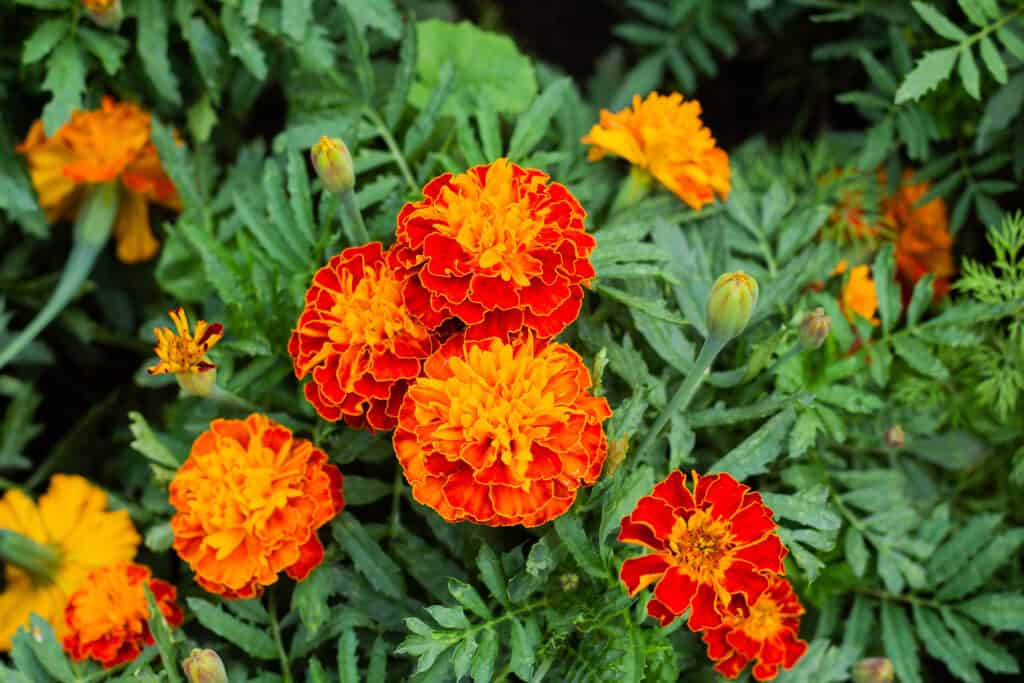
African marigolds can be a mix of colors.
©FunFamilyRu/Shutterstock.com
People all over the world use this flower for therapeutic and religious uses, as well as in food and drink. For symbols, people frequently utilize them in tattoos and home designs.
Nevertheless, since marigolds have come to symbolize so many various things around the world, each individual can choose which meaning best fits them and what idea they want to convey.
Let’s begin by looking at the primary symbolism for this beautiful flower.
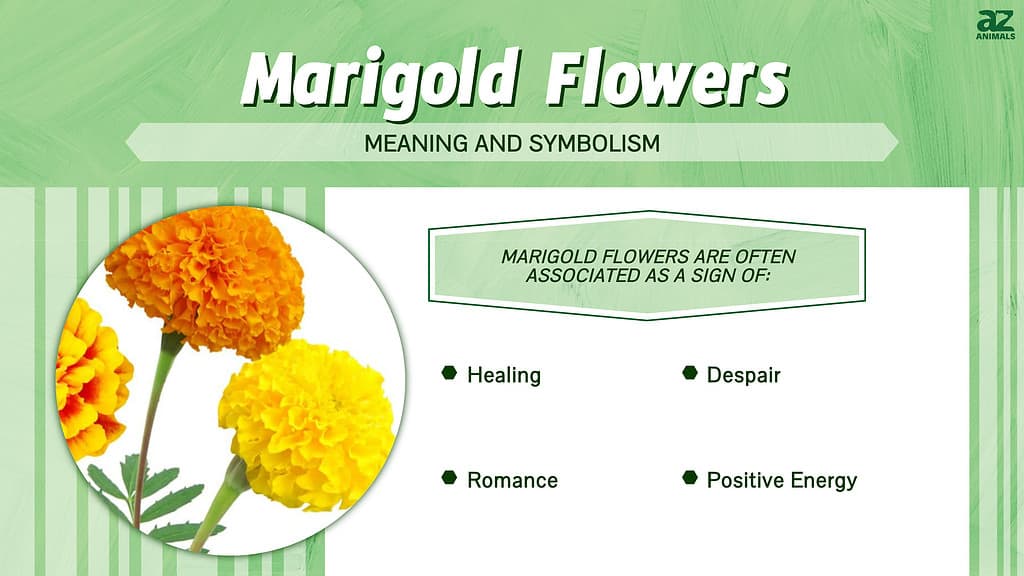
Healing
In various cultures around the world, including in Europe, ancient Egypt, and Greece, marigolds stand for restoration and recovery. Discovering flowers with medicinal qualities was a major focus in ancient cultures because there was no access to pharmaceuticals and such plants were the sole source of healing.

Calendula oil is extracted from marigolds.
©iStock.com/Gonzalo Calle Asprilla
Marigold has numerous medicinal uses, including the treatment of various skin conditions as well as the relief of pain in the stomach, toothaches, and migraines. As a result, marigold was frequently added to dishes and used to make therapeutic teas and beverages.
Shortly thereafter, the marigold became associated with recovery and healing, and in many cultures, it serves as a reminder to access your own healing power.
Despair
All the way back in the Victorian era, despair was symbolized by marigolds. In those days, individuals would place marigolds in their homes to indicate that they were in sorrow or bring marigolds to the gravesite of a loved one.
This strategy resembles the marigold significance in Mexico a great deal, but it is slightly darker since during the Victorian era, individuals chose marigolds to represent that they were genuinely hurting while mourning a loved one.
The tactic used in Mexico is more focused on compassion and remembrance. The Victorian method, in the meantime, was gloomy and depressing.
Romance
People frequently connect marigolds to affection and romance. One of the primary mystical significance of marigolds during the Middle Ages was the belief that these flowers could either bring love or let preexisting love blossom. This was particularly the case with red marigolds.
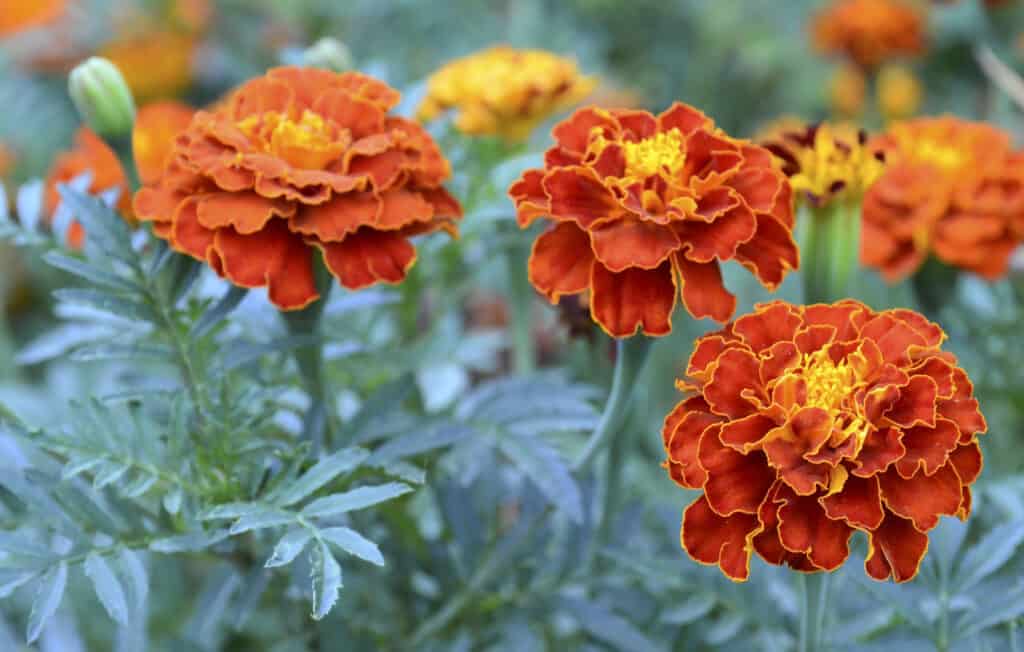
Marigolds repel animals that snakes eat.
©iStock.com/svf74
Because of this, when they met somebody they enjoyed spending time with or if they were looking for a new spouse, individuals would always have a bit of marigold with them.
Positive Energy
The phrases “brightness” and “positive energy” best represent what this flower means to those in India or in the Hindu religion. This flower has a number of positive connotations in this context; they stand for luck, illumination, and uplifting energy.
Hindus connect the yellow marigold with good luck and the Sun’s radiant, kindly spirit because of their observation of the yellow marigold’s likeness to the Sun.
Grief and Death
The popular Dia de Los Muertos, also known as the Day of the Dead, uses marigolds as decorations in Mexico. They are alongside other flowers such as chrysanthemums, gladiolas, and dainty baby’s breath.
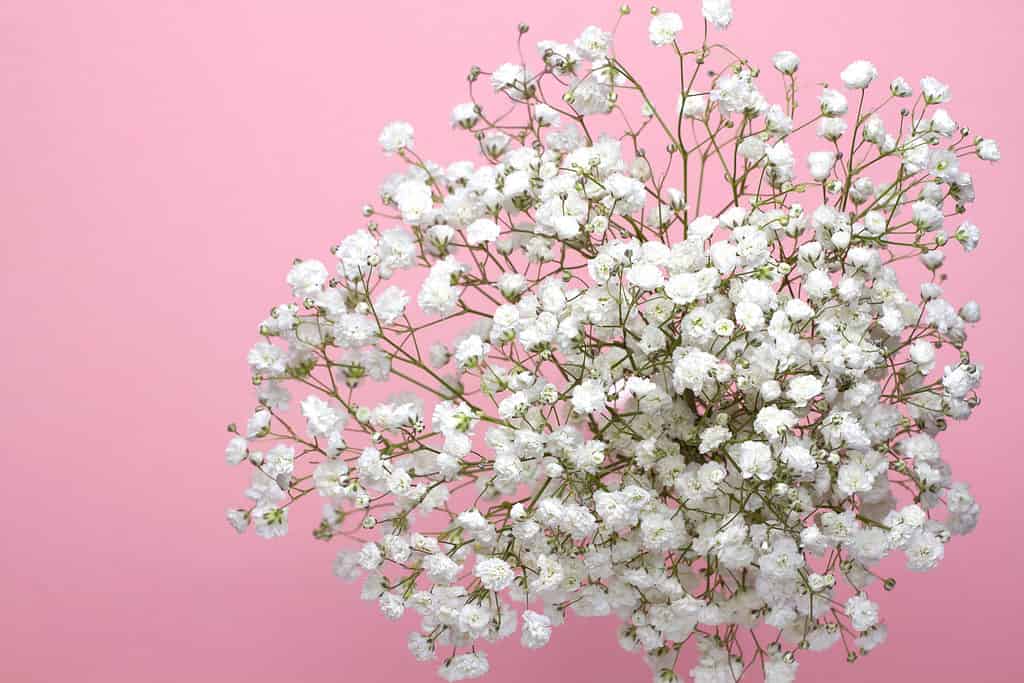
Queen Anne’s lace and baby’s breath consists of tiny white flowers that grow in clusters.
©outlander1746/Shutterstock.com
People often paint these flowers on the faces of individuals, on costumes, or merely as “ofrenda,” which means “offering” or “tribute.” You’ll see this on tombs or on designated altars for those who have passed away.
The marigolds serve, in this instance as a sign of grieving, sadness, and paying tribute to the dead family member. They remember and honor them by using these flowers.
Riches
The simplest way to encapsulate the complex meaning of the marigold flower in the Christian religion is to say that it represents our innermost richness and power.
Christians hold that the word “marigold” is from “Mary’s gold,” which explains why the Bible mentions marigolds as being abundant in the gardens.
Additionally, this religion has a tradition of presenting marigolds to the Virgin Mary as a gift as they pray. They consider these flowers to be highly valuable. Marigolds are a symbol of hope and strength within.
Location, Location, Location!
Depending on where you live, a marigold can hold different meanings. As they say in real estate, location is everything!
What Marigolds Mean in Mexico

Marigolds play a significant role in Dia de los Muertos celebrations in Mexico.
©Saurabh797/Shutterstock.com
In Mexico, they refer to these flowers as “cempasuchil” or “flor de muertos.” They are a major component of the yearly Dia de los Muertos festivities. It is believed that marigold flowers’ vivid orange and yellow tones draw and direct the dead people’s spirits to return to the realm of the living.
People make intricate altars and paths by using marigolds as a representation of the fleeting essence of life and the bond between those who live and those who are gone.
What Marigolds Mean in India

Marigolds are important in Hindu tradition.
©Tatohra/Shutterstock.com
In Hindu tradition, marigold flowers have a unique place in India. They frequently appear at religious ceremonies, marriages, and holidays like Navratri and Diwali. Marigolds represent innocence, good fortune, and the supernatural in certain circumstances.
Their potent scent is thought to stave off bad vibes and wicked spirits. The striking hues of marigolds also stand for the sun’s vitality, which is a representation of warmth, ardor, and inventiveness.
What Marigolds Mean in Greek and Rome

In Greece, marigolds are connected to a number of gods of Greek mythology.
©Naypong Studio/Shutterstock.com
The significance of marigold flowers has a connection to a number of divinities, such as Aphrodite and Hera. In ancient Greek and Roman cultures, these flowers were frequently utilized in religious rituals and as gifts.
Since marigolds were often thought to bloom for a long time, the flower’s title, “calendula,” originates from the Latin phrase “kalendae,” which means the first day of the month.
What Marigolds Mean in Asia

The vivid colors of marigolds have seen them become important to the cultural fabric of China.
©iStock.com/Sky_Blue
Marigolds have woven themselves into the cultural fabric of China and Eastern Asia additionally thanks to their vivid colors and extensive significance. The marigold flower nevertheless has special meanings and importance in different Chinese and Eastern Asian traditions and cultures, despite being less common in these areas than in Mexico or India.
Because of their brilliant color, marigolds are frequently connected with riches and success in China. Marigold flowers are utilized as ornaments throughout the Chinese New Year festivities to beckon wealth, prosperity, and good fortune into residences and places of business. To increase their beneficial properties, people often mix them with other beautiful natural goods, such as oranges.
Marigold Color Signifance
The three primary shades of marigolds are yellow, red, and orange. It is worthwhile to consider the meanings associated with each color. Colors alone each have a unique connotation. This holds true in the case of marigolds.
Selecting the proper color is additionally important for conveying the right message. Whether you want to utilize marigolds as decorations or, more specifically if you intend to get a marigold-themed tattoo.
Yellow

Marigolds grow in the wild all around the United States.
©Light and Vision/Shutterstock.com
The Sun and all it stands for are the main symbols of yellow marigolds. This encompasses energy that is bright, hospitable, strong, healing, fiery, and uplifting. They make the ideal gift for someone who is recuperating from illness.
Yellow marigolds are also perfect if you want to increase the amount of sunshine, healing, and good vibes in the world around you. On the other side, the symbolism of yellow marigold flowers also suggests sadness, mourning, or resentment.
Therefore, feel free to use yellow marigolds to convey your sorrow or state of grief if you so choose.
Orange
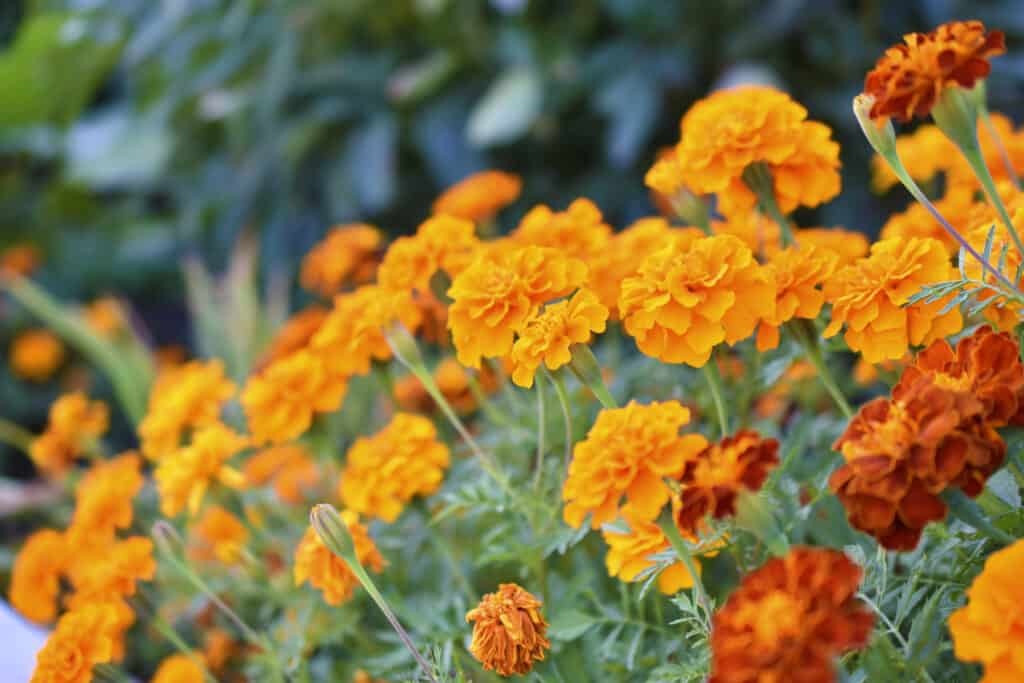
Marigold leaves emit a scent that repels spiders.
©iStock.com/Valeriy Lushchikov
A marigold flower that is orange represents a lot of good energy as well as strong feelings and confidence. Therefore, you’re welcome to use orange marigolds to communicate bravery, powerful love, inner force, and courage, or just to attract these energies into your life.
Red

Red marigolds often have a bit of orange as well.
©Greens and Blues/Shutterstock.com
The key themes of the red marigold’s flower symbolism are passion and love. If you want to attract romance into your life, red marigolds are great for tattoos, centerpieces, or even carrying them in your pocket.
A red marigold or an item embellished with red marigolds can also represent your loving feelings for the recipient. The red marigold’s energy has the power to strengthen love in that connection or advance a romantic relationship!
The photo featured at the top of this post is © iStock.com/Valeriy Lushchikov
Thank you for reading! Have some feedback for us? Contact the AZ Animals editorial team.







